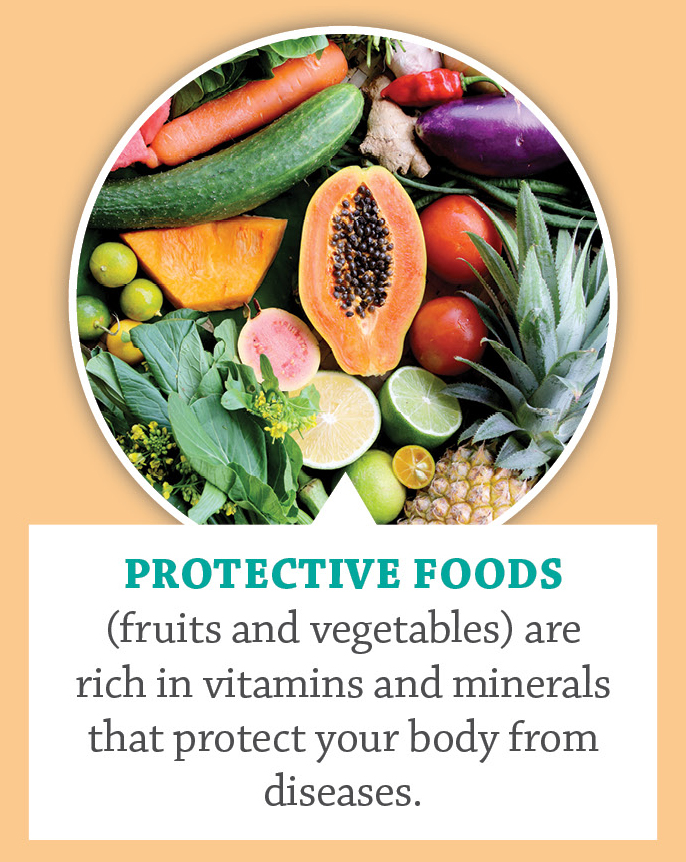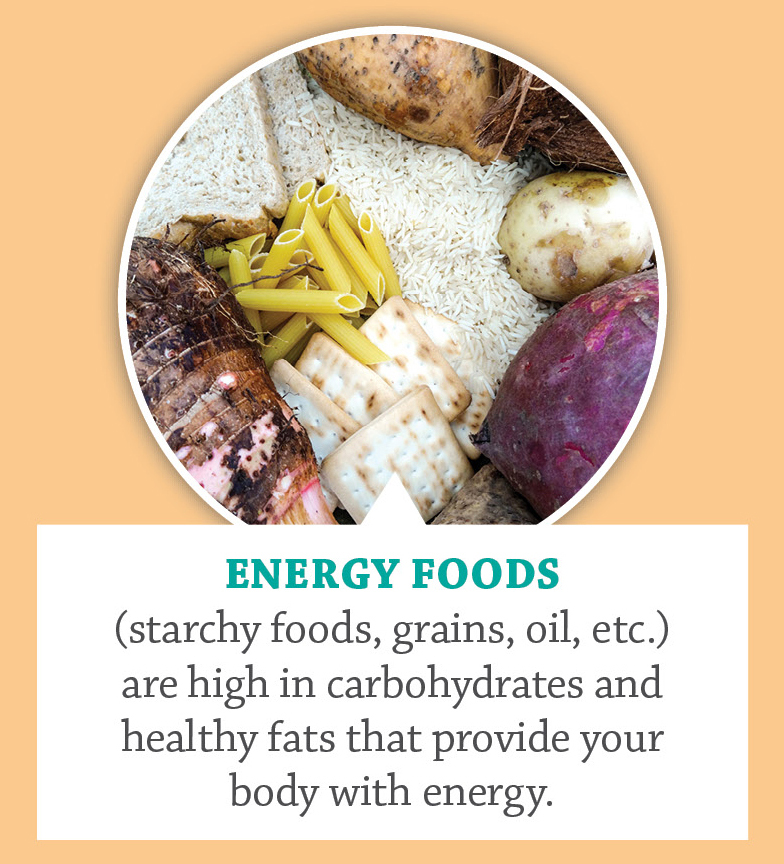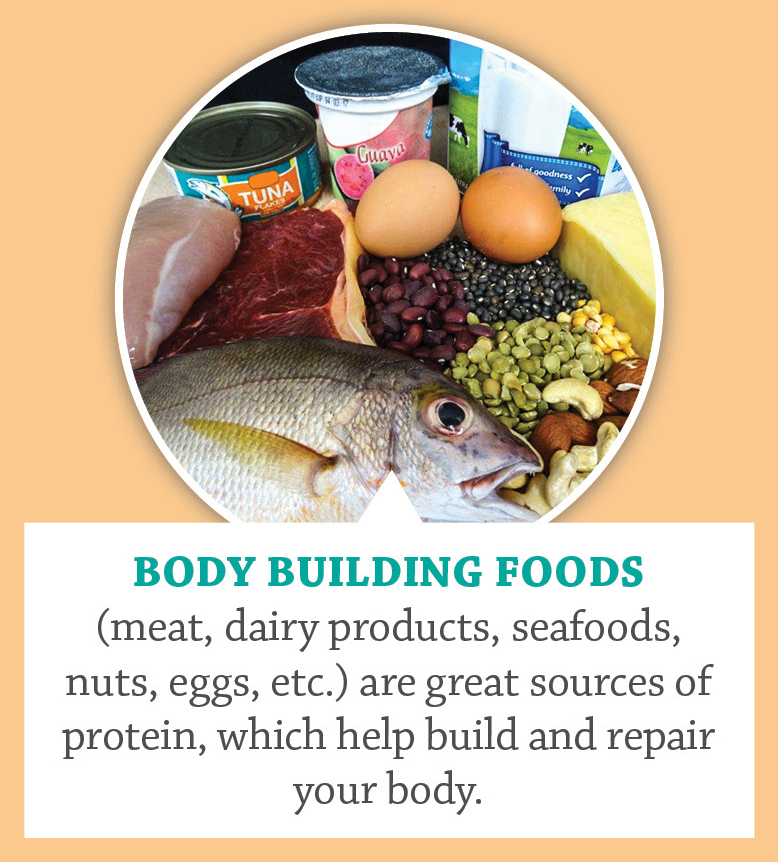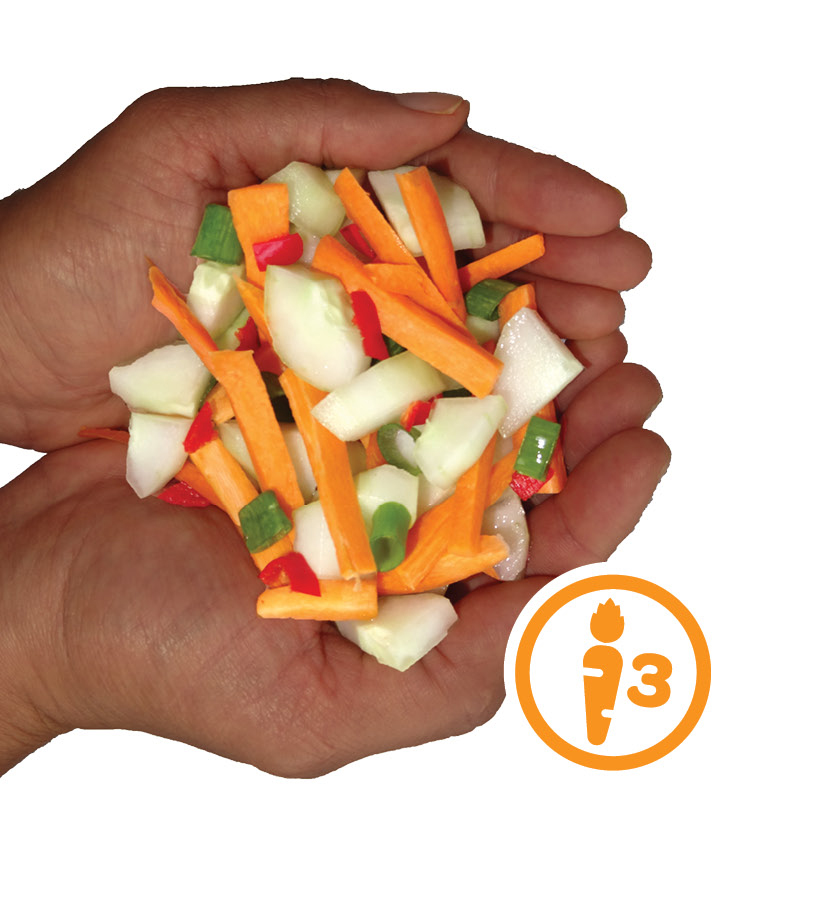What should I be eating?
Our diet should be made of high-quality local foods. These high-quality foods carry lots of vitamins, fibre and nutrients to keep us fit and healthy.
1. Load up on fruits, vegetables, whole grains, lean meats, legumes and fish from the three main food groups:

|

|

|
2. Use natural ingredients from the Pacific
Fill half your plate with vegetables and remember that one plate is enough!
3. Choose healthy snacks

Edible leaves of the Pacific
(under translation)
What foods should I avoid?
Low-quality foods contain a lot of sugar, fat and salt, and are lacking in healthy vitamins and nutrients. These low-quality foods are also likely to be digested quickly, raising our blood sugar levels and leaving us feeling hungry, which can cause us to overeat and gain weight.

What Beverages Should I Avoid?
Our shop are full of sweet fizzy drinks, juices, cordials, flavoured milks and sports drinks. They are taking over our supermarket aisles, littering our beaches, and wreaking havoc on our budgets and our health. Sugar–sweetened beverages are a major cause of obesity, diabetes and tooth decay.
Do you know how much sugar you’re drinking?

It’s so important to stay hydrated under the hot Pacific sun. Fresh water is always the best option to keep you hydrated. For a flavour hit, you can try fresh coconut water, or squeeze some lime into your water.
How much should I be eating?
Eat at least 3 servings of vegetables every day
 What’s a serving?
What’s a serving?
Two hands cupped together of any of the following: beans, celery, cucumber, lettuce, green leafy vegetables, pumpkin, carrot, tomato.
Servings of fruit every day
![]() What’s a serving?
What’s a serving?
One of any of the following: banana, mangosteen, starfruit, guava, etc., or one handful of chopped pineapple, mango, pawpaw, watermelon, etc.
Aim to eat from each food group at every meal. Your plate should contain...


Fill half your plate with vegetables and remember that one plate is enough!
Use Natural Pacific Flavours! Eating salty food contributes to high blood pressure. We should consume LESS than 1 tsp (5g) of salt per day.
Download:
"Live healthy, stay healthy: your wellness challenge"

